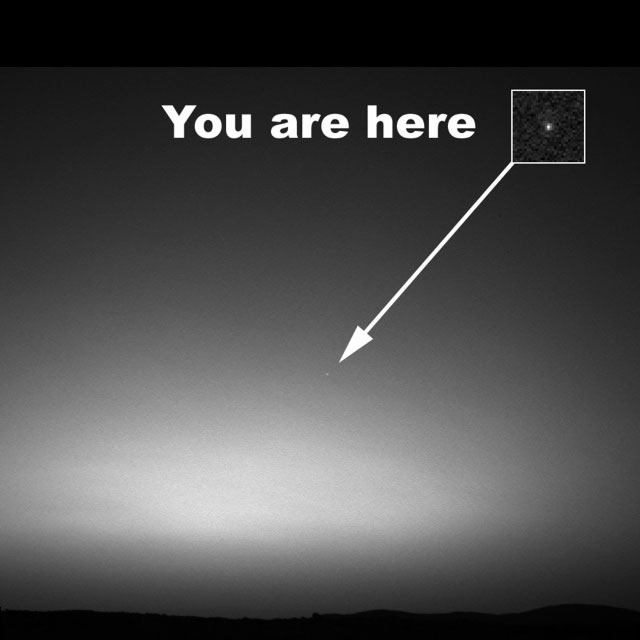
Credit: NASA/JHUAPL/CIW
Posted on 03/29/2011 3:46:46 PM PDT by NormsRevenge
The first spacecraft ever to circle Mercury has beamed home the first-ever photo taken of the small rocky planet from orbit, showing a stark landscape peppered with craters.
NASA's Messenger spacecraft snapped the new Mercury photo today (March 29) at 5:20 a.m. EDT (0920 GMT). The photo shows the stark gray landscape of southern Mercury, a view that is dominated by a huge impact crater.
"This image is the first ever obtained from a spacecraft in orbit about the solar system's innermost planet," Messenger mission scientists explained in a statement.
The new Mercury photo shows a region around the south pole of Mercury. A 53-mile (85-kilometer) wide crater called Debussy clearly stands out in the upper right of the image, with bright rays emanating from its center.
A smaller crater called Matabei, which is 15 miles (24 km) wide and is known for its "unusual dark rays," is also visible in the image to the west of the Debussy crater, mission managers explained.
The new Mercury photo was posted to the Messenger mission website managed by the Johns Hopkins University Applied Physics Laboratory, which is overseeing the flight for NASA.
(Excerpt) Read more at space.com ...
In case you're not paying attention, the military launches its own stuff. Anyone who suggests that there is any military benefit to taking close up photos of Mercury must surely be delusional. There's a good chance I'm more interested in this stuff than you are. I've seen at least three transits of Mercury. But most people couldn't care less. Asking them to subsidize it is just plain immoral; and unconstitutional besides.
ML/NJ
I'll take NASA every time.

Credit: NASA/JHUAPL/CIW
“...Too bad it isn’t in color...”
-
I think it is.
Did Planet Mercury get its name so as to show what happens to your planet when you break too many CFL lightbulbs?
I can do without both.

Then you wouldn’t object to getting rid of NOAA as well. Or the USGS.
VERY cool! Closely resembles what Venus looks like from Earth. Thanks for sharing!
Mercury has an odd orbit and day night cycle.
3 days per “Mercurian” year with the length of day varying with the planet’s distance from the sun. From what I’m reading the sun would be nearly dead still in the sky at perigee.
I'm not going there again... ;-)
-PJ
“NASA costs us roughly $6.00 each, per year. NPR/PBS costs $3.50.”
Cool. I’d be alright with zeroing out NPR and giving their entire budget to NASA so long as they first fire James Hansen.
It uses a ceramic cloth sun-shield and the camera is insulated from the rest of the craft by a paraffin barrier. On the side of the planet facing the Sun, heat is carried from the instruments to the paraffin, which melts. On the dark side of the planet, the paraffin solidifies, transferring heat away from the spacecraft.
No. I wouldn't. But at least one could argue that these serve some military purpose. But we really don't need weather predictors any more than we need tank builders. Somehow the tanks are built by private enterprise, but all the private weather forecasters out there aren't good enough apparently.
ML/NJ
Nice post!
|
The photograph confirmed what scientists have long suspected: the planet Mercury is basically a rebadged version of the planet Ford.
At both 90° Longitudes you get a triple sunrise/ sunset
In the morning in the east
The sun will rise then turn around and set (still in the east) then re-rise again in the east
A mercury day later
The sun will set in the west but then it will re-rise (in the west) and then set again.
It actually shouldn't.
Inner planets (from Earth) will look like a crescent moon. Consider that to see Venus as full it would have to be on the other side of the sun. When we see Venus at its brightest, it is only a quarter lit from our perspective. Imagine the sun at the center of a clock and earth at the tip of the big hand on the 6. Venus would be at the tip of the little hand on the 9 when we see it at its brightest (actuall it might be at the 7 or 8, that is, closer to Earth but less surface area lit from our perspective). The quarter that is facing the sun but on the opposite to us is lit, but we cannot see it.
However, for outer planets (and Earth would be outer from Venus), the entire side facing Venus would be lit when they are both on the same side of the sun.
That's why Earth looks like a disc from Venus, but Venus would look like a crescent moon from Earth.
-PJ
Disclaimer: Opinions posted on Free Republic are those of the individual posters and do not necessarily represent the opinion of Free Republic or its management. All materials posted herein are protected by copyright law and the exemption for fair use of copyrighted works.